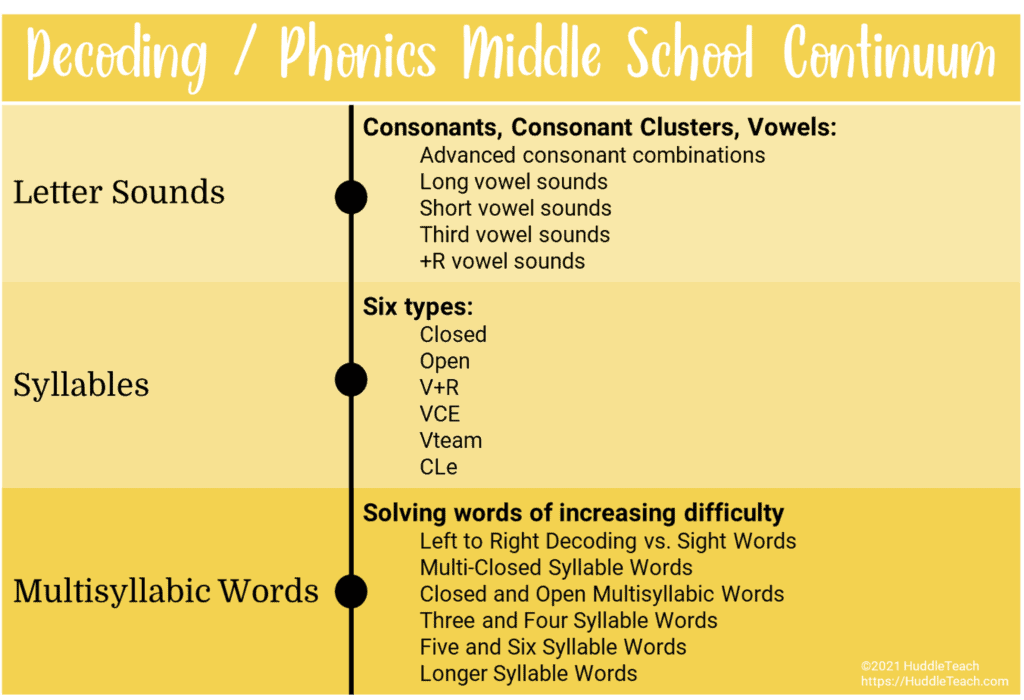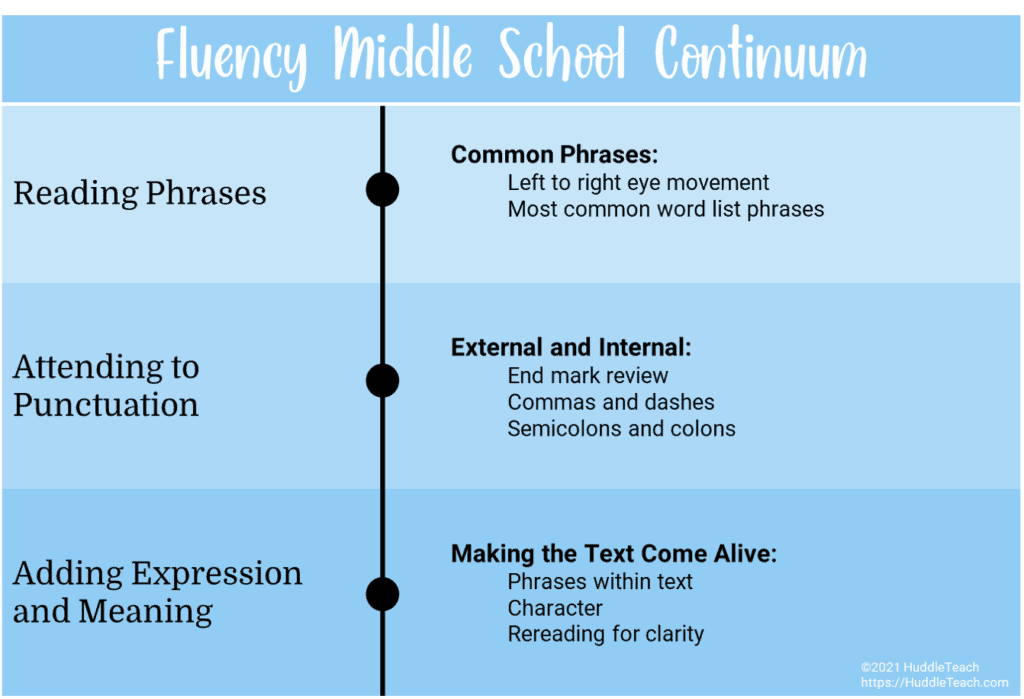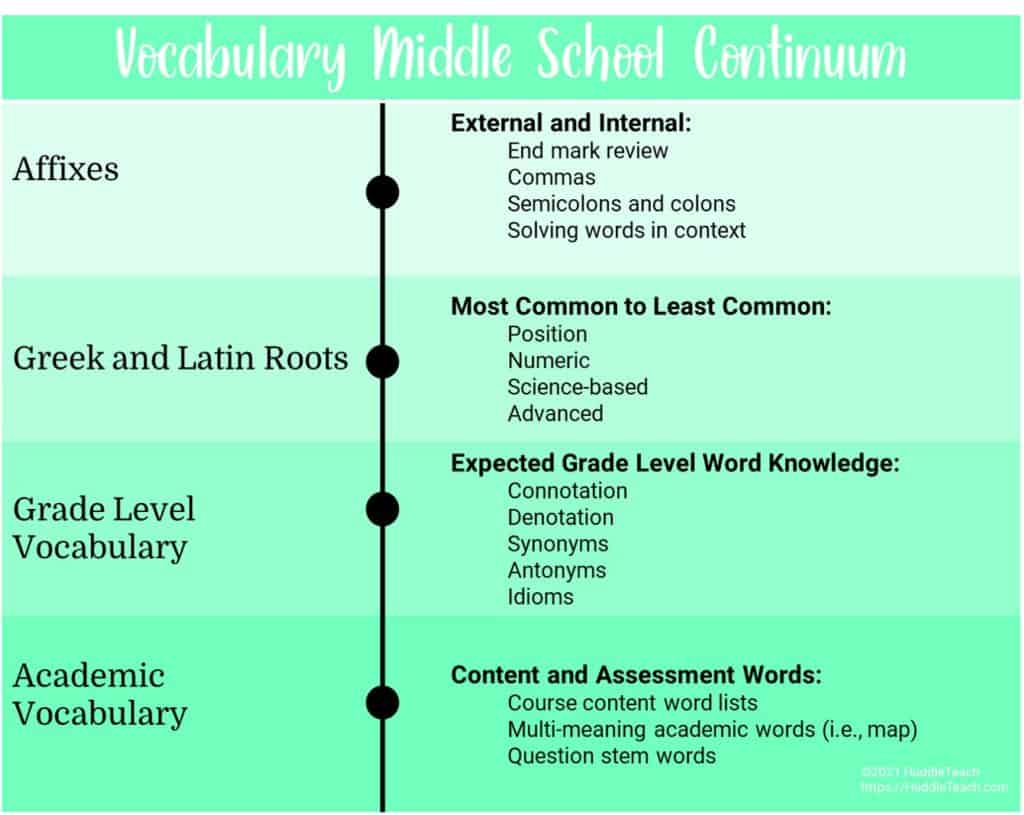Follow this path to move students forward!

This phrase has been used for decades:
K-3, Learn to read;
4-12, Read to learn.
It is meant to imply that decoding skills happen in elementary grades, and content-heavy comprehension happens in the older grades. However, this mistruth has grossly simplified the reading process and instruction. Young children read books like The Truck Book to learn about trucks, and even adults have to adjust their reading skills to read a modern format. Case in point: the first time a grown-up puts together an Ikea shelving unit, ample opportunities exist to stretch reading skills!
Middle School Readers Need More Than Comprehension
In 2000, the National Reading Panel published its report identifying five pillars of reading: Phonemic Awareness, Phonics, Fluency, Vocabulary, and Comprehension. The committee chose these topics partly due to the amount of research available to support their importance. The cutoff line removed the sixth topic: Motivation. Of these top six, the latter five are most relevant to middle school readers. Of course these components look different in middle school than they do in the younger years, but they are still necessary.

Addressing the Components for Middle School Readers
Step One: Assess and Teach Decoding Skills
Along the path to grade level reading, some students missed the part where readers move from sight words to sweeping their eyes to decode multisyllabic words. As words become longer, memory quickly fills and fails. Without skills to sound words out, their fluency and understanding quickly falls. In states that – until recently – did not require intentional and systematic phonics instruction in early grades, this is especially true. Instruction, then, should include research-proven methods, such as using syllables to decode words.

This is the first step to ensuring reading success as decoding leads to fluency, which supports comprehension. As a teacher, what your students know dictates where you begin. The vast majority of struggling readers need to begin with a quick consonant review (especially of the letters h, w, y, and consonant clusters and digraphs), then receive solid instruction in the basic vowel sounds (short, long, third, +r, etc.). A quick phonics screener, such as this sample one, will tell you if your students have mastered these or need instruction.
Building Decoding Into Middle School Reading
If you lead a reading class or meet with small groups, convincing students to participate in decoding activities can be difficult. This blog describes a discussion to help students understand the role of this instruction, but quick movement into solving long words validates the work for them.
Step Two: Model, Teach, and Practice Fluency
Reading aloud to students is a research-proven method for increasing fluency. It also builds a classroom community and reduces stress. When reading aloud for fluency, it is best to use a shared text or project the text so students can follow along. Students also see the pronunciation of long or unfamiliar written words when they can see the text being read aloud. This is just the first step in building a fluent reader; intentional instruction also includes eye sweeps, the role of punctuation, and adding expression and meaning. Using Readers Theater is a fun way to practice these skills, too!

Step Three: Improve Vocabulary
This is a common component in middle school language arts, but for struggling readers, instruction must be intentional and systematic. It must include a focus on affixes, morphology, and academic vocabulary. Grade level vocabulary will develop as reading increases, too.

Step Four: Build Comprehension
This is the most traditional middle school component. For struggling readers, though, comprehension strategies – especially monitoring, inferring, and summarizing – must be specifically taught through genre studies. Teachers should scaffold text, meeting students where they are and moving them toward more difficult Lexile levels. (For information about Lexiles, see Lexile.com.)

Step Five: Keep the Motivation Building!
Students build motivation through:
- Setting goals and monitoring their progress toward those goals.
- Experiencing success while reading something they love.
- Overcoming a stopping point in any of the components.
Motivation grows from a snowball to an avalanche when students write goals and track their progress toward those goals. After all,
Success breeds success
…and that success helps build literacy risk-taking students!
For more information and continuums for these components, download my free ebook!
After receiving the book Components of Reading for Those Asked to Teach Middle School Reading, you’ll receive emails with additional information and resources to teach these components. Join us in extending your learning!


